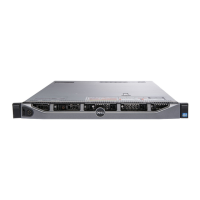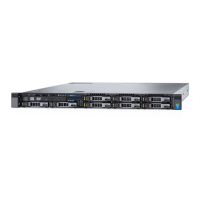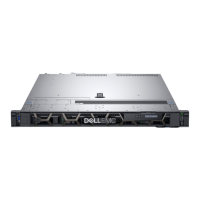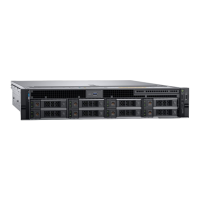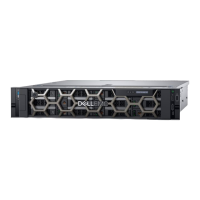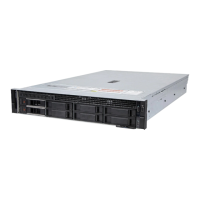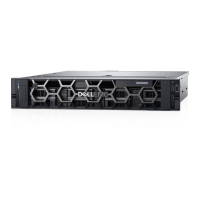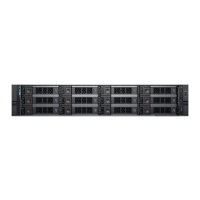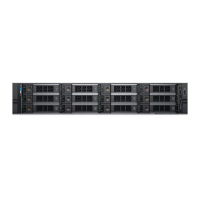Do you have a question about the Dell EMC PowerEdge R640 and is the answer not in the manual?
Lists system configurations for the PowerEdge R640 server.
Details the components and features visible on the front of the system.
Explains the indicators and buttons on the left control panel.
Describes the meaning of various system status LED indicators (amber for errors).
Details the components and indicators on the right control panel.
Describes the components and ports located on the rear of the system.
Guides users on how to find the system's Service Tag and Express Service Code.
Lists various documents and their locations for system information and support.
Provides detailed dimensions for different system configurations of the R640 server.
Details the processor capabilities supported by the PowerEdge R640.
Lists the specifications for supported AC and DC power supply units.
Details the types, capacities, and configurations of system memory supported.
Details the types and locations of system ports.
Provides information on environmental certifications and conditions.
Lists configurations required for efficient cooling and thermal management.
Provides a step-by-step guide for setting up the system.
Explains the purpose and function of the Integrated Dell Remote Access Controller.
Lists resources for installing a supported operating system on the system.
Outlines methods for downloading necessary firmware and drivers.
Explains how to access and use the System Setup utility for configuration.
Explains how to use System BIOS to edit functions like boot order and passwords.
Explains how to view system properties like Service Tag and BIOS version.
Explains how to view and configure system memory settings.
Explains how to view processor settings and enable features like virtualization.
Explains how to set the system boot mode and order.
Explains how to set system passwords and manage security features.
Outlines critical safety precautions to follow before and during system servicing.
Details prerequisites and steps before performing internal system maintenance.
Details steps to take after completing internal system maintenance.
Covers the removal and installation of the system cover.
Covers the removal and installation of system cooling fans.
Covers system memory guidelines and installation.
Covers the removal and installation of processors and heat sinks.
Introduces expansion card support and riser configurations.
Covers information about power supply units.
Covers the replacement of the system battery.
Describes the Dell Embedded System Diagnostics (ePSA) tool.
Explains how to run diagnostics from the Boot Manager.
Explains how to run diagnostics from the Lifecycle Controller.
Provides information on system board jumpers and connectors.
Explains how to disable system and setup passwords using a jumper.
Provides steps and resources for contacting Dell EMC support.
Explains how to use the Quick Resource Locator (QRL) for system information.
| Form Factor | 1U rack server |
|---|---|
| Maximum Processors | 2 |
| Memory Slots | 24 DIMM slots |
| Processor | Up to two Intel Xeon Scalable processors |
| Memory | Up to 3TB DDR4 (2933 MT/s) |
| Storage | Up to 10 x 2.5" drives or 4 x 3.5" drives |
| RAID Controller | PERC H730P, H740P, H330, Software RAID (SWRAID) S140 |
| Network | 2 x 10GbE |
| Power Supply | 495W, 750W, 1100W |
| Management | iDRAC9 with Lifecycle Controller |
| Expansion Slots | Up to 3 x PCIe 3.0 slots |
| Operating System Support | Windows Server, Red Hat Enterprise Linux, SUSE Linux Enterprise Server, VMware ESXi |
| Dimensions | H: 42.8 mm (1.68 in) |
